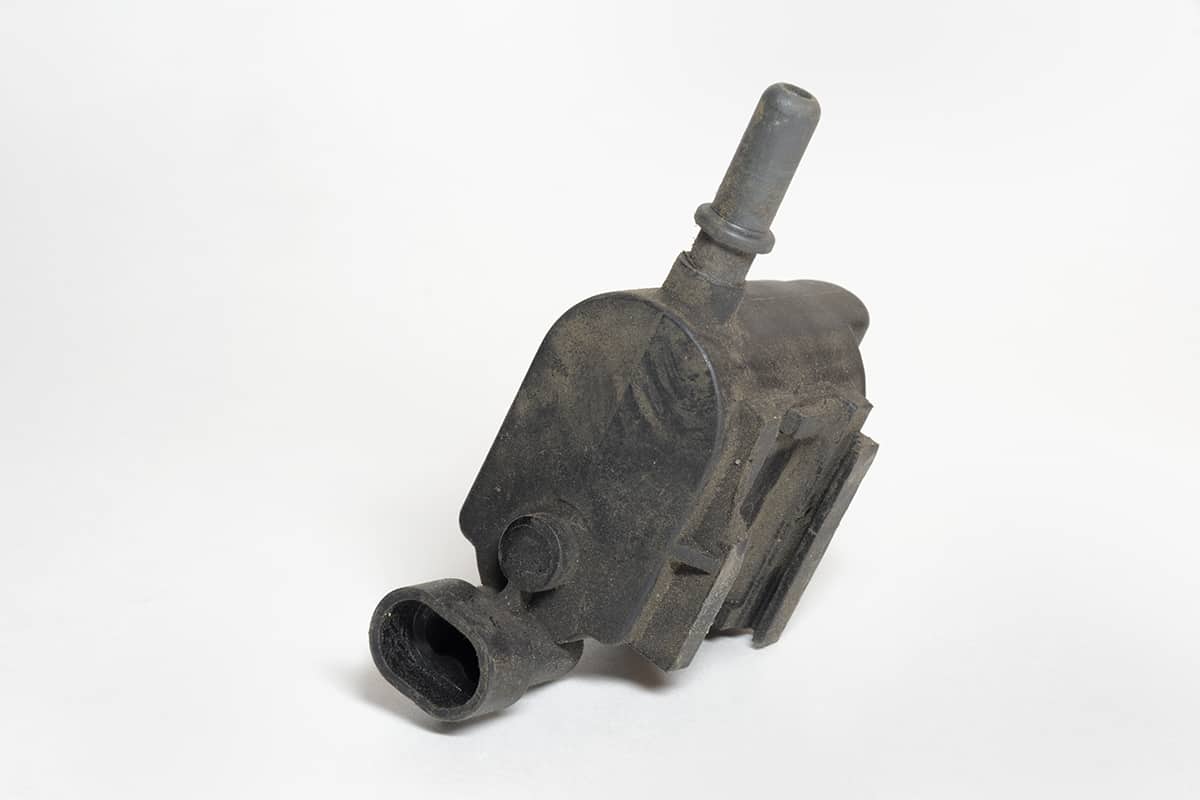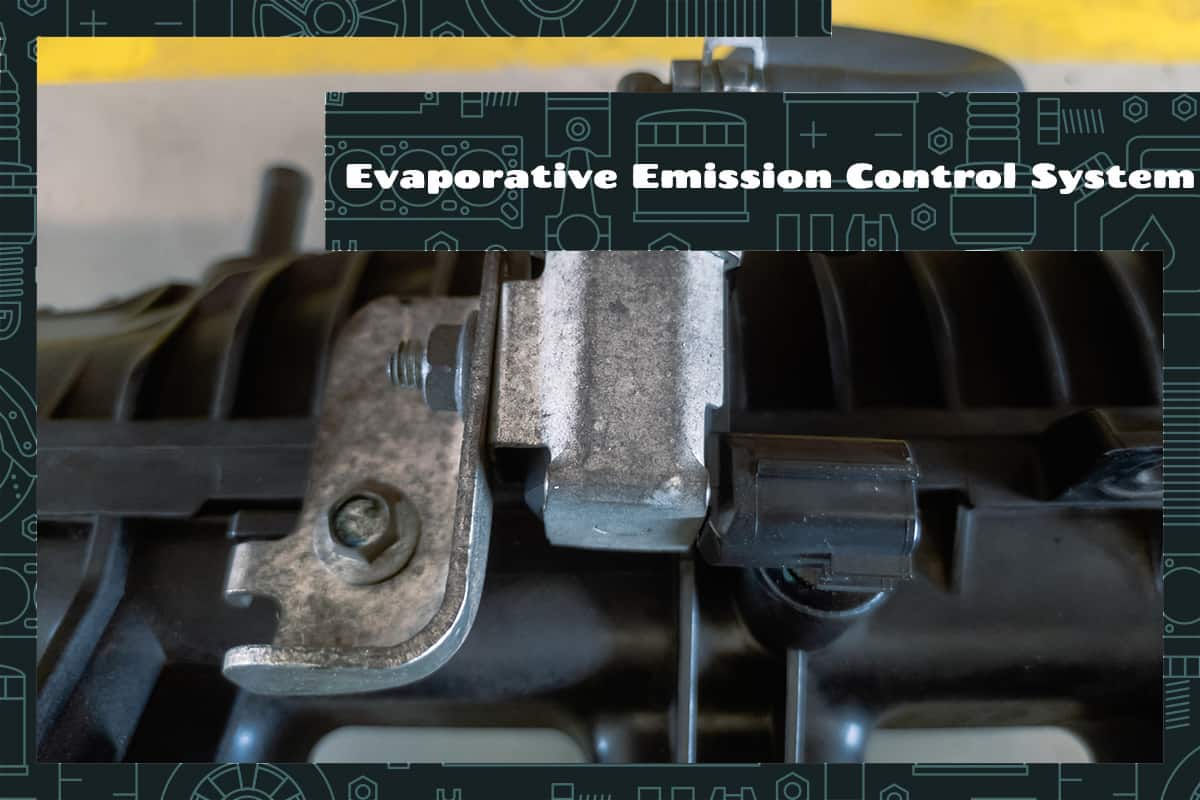Ever heard of the Evaporative Emission Control System? It’s a part of your car that you probably didn’t know existed, yet it plays a vital role in reducing pollution and making our environment cleaner.
The Evaporative Emission Control System (EVAP) is a part of a car designed to prevent fuel vapors from escaping into the atmosphere. It captures fuel vapors produced in the fuel tank, stores them in a charcoal canister, and then releases them into the engine to be burned when the car is running.
In this article, we will explore the different components of the EVAP system, how they work together, and common problems that may occur.
Introduction to the Evaporative Emission Control System (EVAP)
The Evaporative Emission Control System (EVAP) is a part of your car that deals with fuel—specifically, fuel vapors. When fuel sits in your tank, it doesn’t stay as a liquid all the time. Some of it changes into a gas (or vapor).
The EVAP system’s job is to prevent these fuel vapors from just escaping into the atmosphere. Instead, it captures and stores them, and when conditions are right, it sends these vapors to your engine to be burned.
So, why is the EVAP system important? First, by preventing fuel vapors from escaping, it helps to reduce air pollution. This is crucial because fuel vapors are harmful to both humans and the environment. Second, by using the fuel vapors to aid in combustion in the engine, the EVAP system helps to increase the efficiency of your vehicle, making sure that every bit of fuel is used as best as possible.
The EVAP system also protects the other components of your vehicle. Fuel vapors can be corrosive and can damage various parts of your car over time. By controlling these vapors, the EVAP system helps to extend the life of your vehicle’s components.
Components of the EVAP System
The EVAP is made up of several parts. Each has a specific job in managing fuel vapors to keep the air clean and your vehicle running efficiently.
1. Fuel tank
Your car’s fuel tank is where it all starts. This is where your car’s gasoline or diesel is stored and also where fuel vapors are produced. When fuel gets heated (by the sun, for example), it evaporates into gas.
2. Charcoal canister
The charcoal canister is an essential part of the EVAP system. It’s a little box filled with activated charcoal (a specially treated form of carbon), and it’s where the fuel vapors from the fuel tank are stored.
3. Purge valve

The purge valve, also known as the purge solenoid, is like the gateway between the charcoal canister and your vehicle’s engine. When your engine is running, and conditions are right, the purge valve opens, allowing the fuel vapors stored in the charcoal canister to be sucked into the engine.
4. Vent control valve
The vent control valve, or vent solenoid, controls the flow of outside air into the charcoal canister. This fresh air is important because it helps push the fuel vapors from the canister to the engine when the purge valve opens.
5. Fuel vapor lines
Fuel vapor lines are the “roads” that fuel vapors travel on within the EVAP system. These are tubes or hoses that connect the fuel tank, charcoal canister, purge valve, and vent control valve.
How the EVAP System Works
You now know what the various parts of the EVAP are, but do you know how they work together? It’s a bit like a relay race, where the baton (in this case, fuel vapors) is passed from one runner (component) to another, all working towards the same goal: keeping the air clean and your vehicle efficient.
1. Storing fuel vapors
The relay race starts in the fuel tank. When fuel gets heated, it turns into a gas or “evaporates.” These vapors can’t be allowed to escape into the air, so the first runner, the fuel tank, passes them onto the second runner, the charcoal canister. The charcoal inside this canister has an incredible ability to soak up and hold onto these vapors. This stops the vapors from escaping into the atmosphere.
2. Purging fuel vapors
But storing the vapors isn’t enough. We need to get rid of them safely. This is where the third runner, the purge valve, comes in. When your car’s engine is running, and the conditions are right (like when it’s warmed up), the purge valve opens.
This allows the vapors stored in the charcoal canister to be sucked into the engine. There, they’re mixed with air, and when the engine’s spark plugs ignite the fuel, these vapors also get burned. This is called “purging.”
3. Ensuring optimum air intake
Meanwhile, there’s a fourth runner in our relay race: the vent control valve. This valve lets fresh air into the charcoal canister. The fresh air from the vent control valve helps to push the fuel vapors from the canister to the engine when the purge valve opens. This ensures the vapors are purged effectively.
Detecting a Faulty EVAP System: Common Symptoms and Signs
How can you tell if something is wrong with the EVAP? Here are some signs and symptoms to look out for.
1. Check engine light
This light is part of the car’s onboard diagnostics system. When it detects a problem (like a leak in the EVAP system), it will turn the light on. Keep in mind, though, that the check engine light can indicate many different problems, such as a faulty catalytic converter or oxygen sensors.
2. Problems with fueling
If the system isn’t venting vapors properly, it can create pressure in the fuel tank. This can cause the fuel pump to shut off prematurely during fueling, making it seem like your tank is full when it isn’t.
3. Unusual smells
If there’s a leak in the system, you might start to smell gasoline, especially around the rear of the car where the fuel tank and charcoal canister are located. Of course, you should rule out overfilling your gas tank or a leaky gas cap—both of which can contribute to an inordinate amount of gas fumes.
4. Poor engine performance
If the purge valve or vent control valve isn’t working properly, it can affect the mixture of fuel and air going into the engine. This can cause problems like the engine running roughly, stalling, or even failing to start.
5. Lower fuel efficiency
The system is designed to make the most of your fuel, even using the vapors that form in the tank. If it’s not working properly, your car may use more fuel than necessary, which means you’ll need to fill up more often.
Common Problems Associated with the EVAP System (Bad EVAP)
With the EVAP, some problems can prevent your car from playing at its best. Let’s understand these common problems, often referred to as “Bad EVAP”.
1. Leaks in the system
They can happen in any part of the system, from the hoses and tubes that connect the components to the components themselves. A small leak can cause the check engine light to come on, while a large leak could even cause your car to fail an emissions test.
2. Faulty purge valve
This valve is like a door that opens to allow the fuel vapors into the engine. But if this door gets stuck open or closed, it can cause problems. If it’s stuck open, the engine might run rough or even stall. If it’s stuck closed, it can cause the charcoal canister to become saturated with fuel vapors.
3. Damaged charcoal canister
If it becomes saturated with liquid fuel, it’s usually due to a problem with the purge valve, as we just discussed.
4. Faulty vent control valve
If it’s stuck closed, it can create pressure in the system, leading to issues like difficulty fueling the car. If it’s stuck open, it could allow dust or dirt to get into the system or even fuel vapors to escape.
Repairing and Replacing Faulty EVAP System Components
When the EVAP system is off, you should get it checked out by a professional as soon as you can.In the meantime, here’s some information that may be valuable in overcoming EVAP problems in the short term.
Understanding the Issue: Diagnostic Trouble Codes
The first step to fixing a problem is figuring out what’s wrong. When the check engine light comes on, it’s because the car’s computer has stored a “Diagnostic Trouble Code” or DTC. To read this code, you need a device called an OBD II scanner.
Replacing a Faulty Charcoal Canister
If your diagnostic code indicates a problem with the charcoal canister, it may need to be replaced. The canister is usually located near the fuel tank, under the rear of the car. Before starting, make sure you have the right replacement part and always remember to disconnect the battery first for safety.
- Locate the canister and disconnect the vapor lines attached to it. It may also be bolted in place, so you’ll need to unbolt it.
- Remove the old canister and replace it with the new one.
- Reconnect the vapor lines and bolts, then reconnect the battery.
Replacing a Malfunctioning Purge Valve
If the purge valve is the problem, it’s usually located in the engine compartment.
- Disconnect the battery for safety, then locate the purge valve. Disconnect the wiring and vacuum lines attached to it.
- Remove the old valve. It might be held in place by bolts or clips.
- Install the new purge valve, reconnect the wiring and vacuum lines, and then reconnect the battery.
Addressing a Faulty Vent Control Valve
The vent control valve is often near the charcoal canister at the rear of the car. If it’s faulty, it can be replaced much like the other components.
- Disconnect the battery, then locate the vent control valve.
- Disconnect any hoses or wires connected to it, and unbolt it if necessary.
- Remove the old valve and replace it with the new one, then reconnect everything.






